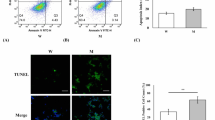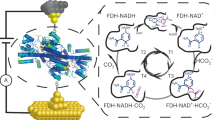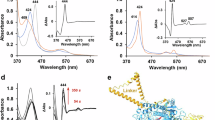Abstract
INVESTIGATIONS in this laboratory have shown that the various DPNH-cytochrome reductase preparations from heart and liver mitochondria described in the literature are fragments of the respiratory chain-linked DPNH dehydrogenase produced by the extraction method (acid-ethanol-heat or thermal degradation) used in the isolation of cytochrome reductases1–5. By the action of these agents as well as various proteolytic enzymes, urea and under a number of other experimental conditions the purified dehydrogenase is also degraded to lower molecular weight cytochrome-reducing fragments. This conversion involves major changes in many of the molecular and catalytic properties of the enzyme of which the emergence of cytochrome (and DCIP) reductase activity is but one feature. The observations on thermal and proteolytic degradation have been confirmed and extended by Kaniuga7,8, who has independently discovered the urea-catalysed transformation of the enzyme. Acidethanol degraded DPNH dehydrogenase is not distinguishable from the preparations of Mahler et al.9, de Bernard10, and Mackler11, while the thermally degraded enzyme is in every respect identical with the preparation isolated by King and Howard12 of which the major component is the Mahler enzyme9. Although these investigations have directed attention to the fact that DPNH dehydrogenase is unstable under a variety of conditions13 and readily breaks down to fragments with very different properties, very recently yet another DPNH oxidizing preparation derived from heart mitochondria has been described14 which appears to be a breakdown product of the respiratory chain-linked DPNH dehydrogenase. It is the purpose of this communication to show that, in terms of available evidence, the “DPNH dehydrogenase” of Chapman and Jagannathan14 is not a naturally occurring enzyme but a fragment produced by the action of thiourea on DPNH dehydrogenase.
This is a preview of subscription content, access via your institution
Access options
Subscribe to this journal
Receive 51 print issues and online access
$199.00 per year
only $3.90 per issue
Buy this article
- Purchase on SpringerLink
- Instant access to full article PDF
Prices may be subject to local taxes which are calculated during checkout
Similar content being viewed by others
References
Kearney, E. B., Watari, H., Singer, T. P., and Basinski, P., Fed. Proc., 21, 251 (1962).
Watari, H., Kearney, E. B., Singer, T. P., Basinski, D., Hauber, J., and Lusty, C. J., J. Biol. Chem., 237, PC1731 (1962).
Cremona, T., Kearney, E. B., and Villavicencio, M., Fed. Proc., 22, 467 (1963).
Singer, T. P., in Boyer, P., Lardy, H. A., and Myrbäck, K., The Enzymes, second ed., 7, 345 (Academic Press, Inc., New York, 1963).
Watari, H., Kearney, E. B., and Singer, T. P., J. Biol. Chem. (in the press)
Cremona, T., Kearney, E. B., Villavicencio, M., and Singer, T. P., Biochem. Z., 338, 407 (1963).
Kaniuga, Z., and Veeger, C., Biochim. Biophys. Acta, 60, 435 (1962).
Kaniuga, Z., Biochim. Biophys. Acta (in the press).
Mahler, H. R., Sarkar, N. K., Vernon, L. P., and Alberty, R. A., J. Biol. Chem., 199, 585 (1952).
de Bernard, B., Biochim. Biophys. Acta., 23, 510 (1957).
Mackler, B., Biochim. Biophys. Acta., 50, 141 (1961).
King, T. E., and Howard, R. L., J. Biol. Chem., 237, 2686 (1962).
Minakami, S., Cremona, T., Ringler, R. L., and Singer, T. P., J. Biol. Chem., 238, 1549 (1963).
Chapman, A. G., and Jagannathan, V., submitted to Biochem. Biophys. Res. Comm. Manuscript circulated by Information Exchange Group No. 1 of the National Institutes of Health, 1963.
Ringler, R. L., Minakami, S., and Singer, T. P., J. Biol. Chem., 238, 801 (1963).
Author information
Authors and Affiliations
Rights and permissions
About this article
Cite this article
CREMONA, T., KEARNEY, E. & VALENTINE, G. Conversion of DPNH Dehydrogenase to DPNH-cytochrome Reductase by Thiourea. Nature 200, 673–674 (1963). https://doi.org/10.1038/200673b0
Issue date:
DOI: https://doi.org/10.1038/200673b0



